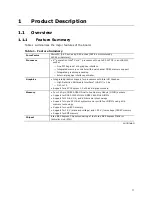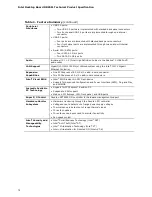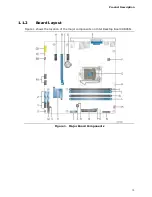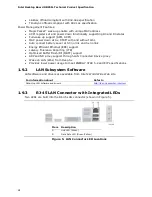
Product Description
21
1.4.1
Memory Configurations
4
th
generation Intel Core processors support the following types of memory
organization:
•
Dual channel (Interleaved) mode
. This mode offers the highest throughput for
real world applications. Dual channel mode is enabled when the installed memory
capacities of both DIMM channels are equal. Technology and device width can vary
from one channel to the other but the installed memory capacity for each channel
must be equal. If different speed DIMMs are used between channels, the slowest
memory timing will be used.
•
Single channel (Asymmetric) mode
. This mode is equivalent to single channel
bandwidth operation for real world applications. This mode is used when only a
single DIMM is installed or the memory capacities are unequal. Technology and
device width can vary from one channel to the other. If different speed DIMMs are
used between channels, the slowest memory timing will be used.
•
Flex mode
. This mode provides the most flexible performance characteristics.
The bottommost DRAM memory (the memory that is lowest within the system
memory map) is mapped to dual channel operation; the topmost DRAM memory
(the memory that is nearest to the 8 GB address space limit), if any, is mapped to
single channel operation. Flex mode results in multiple zones of dual and single
channel operation across the whole of DRAM memory. To use flex mode, it is
necessary to populate both channels.
For information about…
Refer to:
Memory Configuration Examples
http://www.intel.com/support/motherboards/desktop/sb/cs-
011965.htm















































